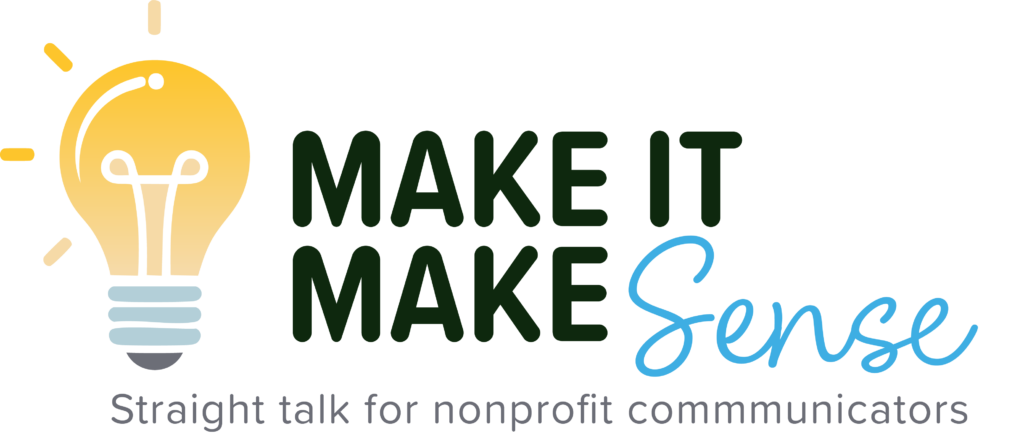There’s a certain kind of blog post you’ve probably read lately. It makes its points, it flows logically, it may even be trendy. But something’s off. It’s bloodless. It takes no risks and has no clear point-of-view. Maybe the structure feels too formulaic.
That’s because it probably wasn’t written by a person. Not really.
You’ve just been AI’d.
So-called artificial intelligence tools like ChatGPT, Claude, and Gemini are astonishing in their capabilities. They can summarize, synthesize, and even imitate the style of human writing. In fact, they were built by programmers secretly feeding millions and millions of real human authors’ works into their code (we can dig into the ethics of using AI later).
But there is an important reason we use the word artificial. You guessed it. Because it’s not real intelligence. AI tools cannot think for you (or for themselves… yet). And when you try to outsource your thinking to a bot, it shows.
So let’s talk a bit about AI, how we use it, how we should use it, and why all of this matters.
Originality is 🔑
The idea for this article came to me a couple of weeks ago, when three very different people in very different professions shared three very different types of artifacts with me. Yet they all looked and felt the same. One was a public official’s summary of court records; one was a friend’s blog draft; and one was a proposal from a fellow nonprofit communicator. There was nothing inherently wrong with what I read, but the similarities in format and style were startling.
Let me show you what I saw by recreating it in a single ChatGPT prompt:
I really enjoyed the metacognitive experience of prompting ChatGPT to look inward, to self-critique. Did I worry that it would become sentient as a result? No. Yes? No.
That block of content, the “overly uniform structure,” could be placed side-by-side with what I received from each of the sources I mentioned above. When I come across an article that uses emojis as a core component of its structure, the 🚩 goes up. Same with that short, punchy bullet list sandwiched between repetitive one-liners. I was kind of hoping ChatGPT would use them in its response, and it even nailed other things I was spotting in its self-evaluation.
There’s nothing wrong with templating your content. The real key, they say, is consistency. When you have a style/structure that works for you and provides value to your readers, absolutely stick with it. Your audience will come to appreciate and anticipate your style in a way that strengthens their connection to your content. On the flip side, if what you offer feels rote, formulaic, and obviously-AI-generated, your readers might find themselves wondering why don’t I just go to ChatGPT for this information?
Make your perspective essential.
AI is the New Beige
I’ve talked about how AI shows up in your content, the things that are missing when you rely too heavily on it. The things that make content feel just a bit flat or off, but you just can’t put your finger on why.
A good blog post doesn’t just share information—it shows how the author thinks. Great writing frameworks in tension. It includes weird metaphors and hot takes and deviations from the author’s original intention when putting pen to paper (or fingers to keyboard). Sometimes, it reveals a bit of vulnerability.
You can tell when a blog post was written with too much help from AI. It reads like a conference panel with no panelists or the transcript of a well-performed keynote address. It’s technically accurate but emotionally detached. I keep using the pronoun it in this article, and that’s the driving force behind the detachment: an it is writing, not a person. And until we find ourselves in The Singularity, you won’t find many people saying “I can’t wait until ChatGPT’s next book comes out.” When writing your blog, or proposal, or even your email to a friend, bring your humanity.
In the nonprofit sector especially—where values, trust, and community matter—people want to hear your voice, not a simulation of what someone like you might say. When your AI is showing, here are a couple other things that tend to disappear:
- A position. AI is designed to be neutral. Great writing is not.
- Specificity. Real examples, local knowledge, and lived experience are hard to fake.
- Original Takes. AI can remix existing ideas, but it cannot invent new angles.
Use AI for Ideation, Not Creation
To be clear, this isn’t a purist rant. I use AI tools at least once a week. I want you to use them, too. I just want you to use them better and in a way that doesn’t take away from who you are and what you bring to the table.
I was having a hard time visualizing a tattoo I wanted last year, and a combination of Genesis and Adobe got the idea close enough that the tattoo artist and I reached something spectacular. That tattoo went viral, and I’m not ashamed that an early concept came after 10 or 15 increasingly detailed prompts. But the concept, at its core, was mine. And the final result was a creation of the tattoo artist from that concept that Genesis and Adobe helped me articulate.
When I took on a client in a completely new industry, I turned to ChatGPT to help me develop content themes. I kept maybe 20% of the ideas that came from the process, refining them to align with the organization’s goals, but the real value here was getting over the hump of unfamiliarity with new subject matter.
Even the documents I received that inspired this article strike me as mostly good uses of AI. The public official likely wouldn’t call himself a writer, and his goal was to synthesize a lot of complex information for a very specific audience. The nonprofit communicator was converting brainstorming notes into something that could kickstart a more comprehensive plan. The blogger’s aim was to punch up their ideas into something that matched high-performance trends. None of these uses affected the trust I held for the content creators.
I think the best way to use AI is as a high-powered assistant, not a ghostwriter. Use it to get unstuck. Try to avoid the impulse to copy-paste anything it produces. When we ask a computer to create on our behalf we don’t just lose our voice. We never develop it in the first place.
There’s a lot of science coming out now about how AI is negatively impacting creativity and learning. There’s also a wealth of great resources to help professional writers use AI ethically. I’ll be posting a new story soon with tools that can benefit nonprofit communicators and how you might use them, as well as some interesting reads to help you understand the ethical dilemmas of creating with AI.
Big Takeaway: People Notice Authenticity
They’ll also notice if you’re lacking it.
We’re in an age of content abundance. AI makes it cheap and easy to publish hundreds and hundreds of articles, lists, graphics, even videos. But audiences are already tuning out the noise. The posts that will stand out now are the ones that could only have come from you. They will notice if your content looks the same as everything else they’re seeing on the internet (bad thing), but they will be captivated if you bring them something new.
Think of that climactic Aaron Burr line in Hamilton: “I am the one thing in life I can control. I am inimitable; I am an original.” Turn it into a mantra.
Your audience is looking for you just as much as you’re looking for them, and they want to read content that feels connected to everything else you offer. That means showing your expertise, your opinion, your working brain. Because if your AI is showing, your authority isn’t.
So please, if you’re going to post something under your own name… make it make sense.




